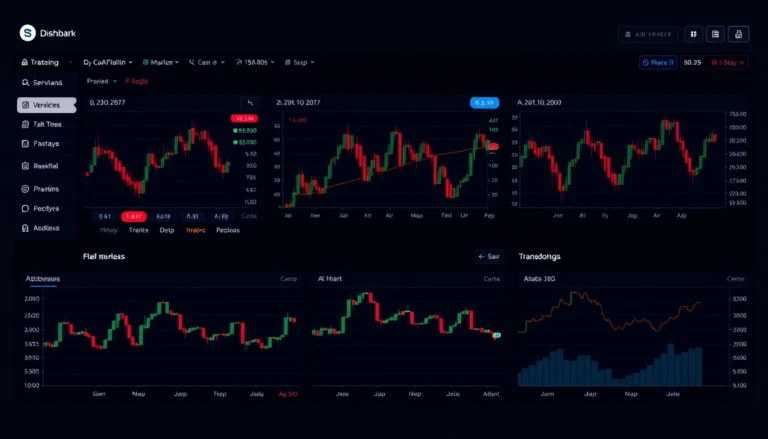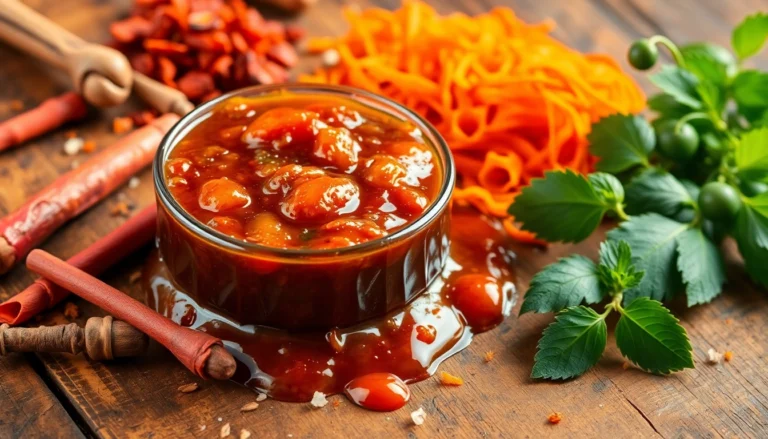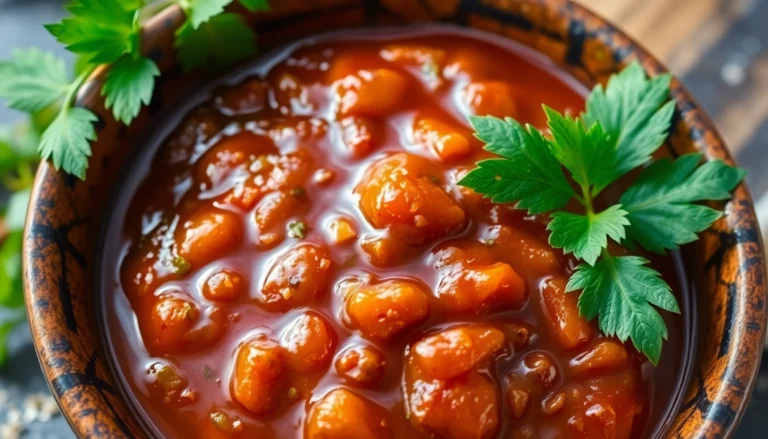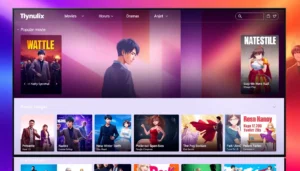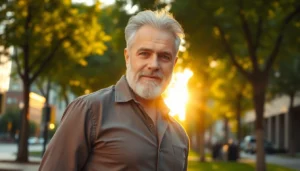Introduction to the Term DILF
The term dilf meaning has gained significant prominence in contemporary pop culture, social media, and everyday conversations. Originally emerging as part of internet slang and colloquial language, DILF is an acronym that stands for “Dad/Daddy I’d Like to Fk.” While it explicitly references sexual attraction towards older, masculine men, the term’s usage extends beyond literal interpretation, often encompassing admiration, humor, and even celebration of mature masculinity. Interestingly, a man doesn’t necessarily need to be a father to be called a DILF; instead, the term emphasizes age, attractiveness, and sometimes the aura of maturity and strength that older men exude.
Understanding the origins and evolution of this term is essential to grasp its cultural significance and how it has permeated various facets of entertainment and social discourse. The playful, provocative nature of DILF, much like its counterpart MILF, has contributed to its popularity, making it a staple in modern slang that continues to evolve. As societal standards around attractiveness and masculinity shift, so too does the way the term is perceived and employed in different contexts.
Origin and Etymology of DILF
The origin of the term DILF closely follows the rise of MILF, which itself became popularized in the early 2000s. MILF, standing for “Mother I’d Like to Fk,” was popularized by the 1999 film American Pie and quickly entered mainstream vernacular as a humorous, albeit explicit, way to describe attractive older women. Following this trend, DILF emerged as a male counterpart, emphasizing masculinity and attractiveness in older men, often with an element of humor or admiration.
The etymology of DILF is rooted in internet culture and colloquial speech, where abbreviations and acronyms are common for quick, punchy expressions. The term gained traction on online forums, social media, and entertainment media, where it was used both as a joke and as a compliment. Over time, it became associated with the image of a handsome, mature man who exudes confidence and strength—characteristics often associated with masculinity at its most appealing.
The term’s rise in popularity can also be linked to the broader cultural trend of celebrating male attractiveness at all ages, shifting away from youth-centric standards. As society becomes more accepting of diverse expressions of masculinity, the term DILF has taken on multiple layers of meaning, from humorous slang to a genuine compliment.
DILF in Popular Culture
Films and TV Shows
The portrayal of DILFs in movies and television has contributed significantly to the term’s mainstream recognition. One of the earliest and most notable pop culture references came from the American Pie franchise. Although the original 1999 film primarily popularized the term MILF, subsequent films and related media expanded on the concept of attractive older men. In American Pie Presents: The Book of Love (2009), the character Rob’s father is depicted as a DILF, embodying the stereotypical traits of masculinity, attractiveness, and maturity. This portrayal helped normalize the term and associate it with charismatic, paternal figures who possess both charm and physical appeal.
Another prominent example appears in the popular Netflix series Riverdale, which debuted in 2017. The character Fred Andrews, played by Luke Perry, is often regarded by fans as a quintessential DILF. His rugged good looks, protective nature, and maturity resonate with viewers who admire the character’s strength and attractiveness. The show’s popularity has helped further embed the term in contemporary pop culture, often used by fans and viewers to describe similar characters or real-life men who embody these qualities.
Video Games
Beyond television and film, the concept of DILFs has found its way into the gaming world. A notable example is the character Halsin from the acclaimed role-playing game Baldur’s Gate III. Fans affectionately nicknamed him “Daddy Halsin,” referencing his protective, strong, and mature demeanor. While not explicitly labeled a DILF within the game, fans’ perception of Halsin as a DILF stems from his physical appearance and personality traits—traits that evoke the classic image of a strong, caring, mature man. This fan-driven nickname illustrates how the term has extended into gaming culture and fandoms, often used to celebrate characters that exude masculinity and strength.
Internet and Social Media Trends
The internet has played a pivotal role in popularizing and democratizing the concept of DILFs. Instagram accounts like DILFs of Disneyland boast over 300,000 followers, showcasing photos of attractive, often older men enjoying family time at Disneyland. These profiles highlight the playful, humorous, and appreciative attitude the internet fosters toward DILFs, turning them into objects of admiration and memes alike.
Reddit’s NSFW community, r/DILFs, gathers nearly 100,000 members who share photos, stories, and memes celebrating DILFs. This online space exemplifies how the term has become a subculture in its own right, blending humor, admiration, and sexuality. Social media has also contributed to the proliferation of DILF memes, hashtags, and viral videos, further embedding the term into everyday discourse and pop culture.
DILF vs. MILF: Similarities and Differences
While DILF and MILF share structural similarities—both being acronyms that originated from pop culture—they represent different archetypes of attractiveness. MILF, which became widely popularized in the late 1990s, primarily describes older women who are considered sexually attractive, often with an emphasis on maternal qualities or attractiveness that defies traditional age norms.
In contrast, DILF emphasizes masculinity, maturity, and physical appeal in men. Both terms often carry humorous connotations, but they can also be used sincerely as compliments. The key difference lies in gender and societal perceptions: MILFs are often associated with nurturing qualities and femininity, while DILFs evoke strength, protection, and masculinity.
Despite these differences, both terms challenge traditional age stereotypes and celebrate attractiveness across age groups. They also reflect changing societal norms that embrace sexuality and admiration for individuals regardless of age or gender roles.
The Role of DILF in Modern Sexual and Pop Culture
In modern society, DILF has become more than just slang; it symbolizes a broader cultural appreciation for mature masculinity. The term has been embraced in various domains, from fashion and advertising to celebrity culture. Many brands now feature older male models to appeal to diverse audiences, subtly reinforcing the idea that attractiveness is ageless and that confidence and strength are desirable traits at any age.
Celebrity figures such as George Clooney, Idris Elba, and Hugh Jackman are often celebrated as DILFs due to their mature looks, charisma, and appeal. Their popularity exemplifies how the cultural perception of attractiveness has shifted to include age as a positive attribute rather than a limitation.
Furthermore, the term has influenced the portrayal of masculinity in media, encouraging narratives that emphasize strength, protection, and emotional maturity. This shift aligns with broader societal movements recognizing the value of authenticity and diversity in representations of masculinity and attractiveness.
How the Term is Used Humorously and Seriously
The versatility of the term DILF allows it to be used in both humorous and sincere contexts. In casual conversations, it often functions as a playful compliment or tease among friends, sometimes accompanied by jokes or memes. The humorous tone can serve to lighten the conversation about attractiveness, age, and masculinity.
For example, someone might jokingly refer to a dad at the park as a DILF, emphasizing his attractive appearance and mature demeanor. On the other hand, many people genuinely use the term as a compliment to express admiration for an older man’s attractiveness, confidence, or personality. Celebrities and public figures are frequently labeled DILFs by fans, reflecting admiration rather than humor.
This dual usage demonstrates the term’s cultural flexibility. While its origins are rooted in humor and internet slang, it has matured into a term that can carry genuine admiration and respect, especially when used to celebrate positive attributes of maturity and masculinity.
The Impact of DILF on Perceptions of Age and Attractiveness
The emergence and popularization of the term DILF have influenced societal perceptions of age and attractiveness. Traditionally, Western beauty standards often prioritized youth, marginalizing older individuals in terms of desirability. However, the widespread use of DILF reflects a cultural shift toward appreciating maturity, experience, and confidence as attractive qualities.
This shift is reinforced by media representation, where older male actors are increasingly cast in roles that emphasize their appeal and strength. The portrayal of DILFs in television, movies, and social media helps challenge ageist stereotypes and promotes a more inclusive understanding of attractiveness.
Moreover, the term encourages older men to embrace their age and confidence, fostering a sense of empowerment. It also influences individual perceptions, as people recognize that attractiveness is multifaceted and not solely dependent on youth. This evolution aligns with broader trends promoting diversity and authenticity in beauty standards.
In essence, DILF has contributed to redefining what it means to be attractive at any age, emphasizing that confidence, charisma, and personality are just as vital as physical appearance.
Conclusion: The Evolving Meaning and Cultural Significance / Understanding DILF
The term dilf meaning has traveled far from its origins as internet slang to become a recognizable symbol of masculinity, attractiveness, and cultural shifts in perceptions of age and desirability. Its presence in films, television, gaming, and social media underscores its versatility and the way it resonates with contemporary audiences.
While it shares similarities with MILF, DILF emphasizes a different set of qualities—masculine strength, maturity, and confidence—that challenge traditional stereotypes and celebrate the appeal of older men. Its usage ranges from humorous banter to genuine admiration, reflecting its adaptability across contexts and communities.
As society continues to evolve, so does the meaning of DILF. It now encapsulates a broader appreciation for diversity in attractiveness and challenges outdated notions of youth-centric beauty standards. The term’s popularity and cultural relevance highlight a shift toward embracing age as a positive attribute, promoting a more inclusive understanding of attractiveness at all stages of life.
Understanding DILF not only offers insight into contemporary slang but also sheds light on larger cultural narratives about masculinity, aging, and attractiveness. The term’s ongoing evolution signifies a more open, diverse, and accepting view of what it means to be desirable, confident, and attractive—regardless of age or societal expectations.


